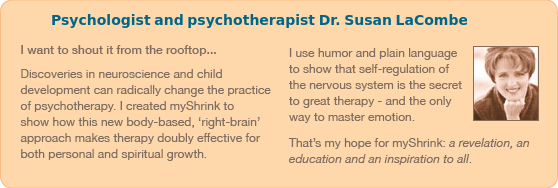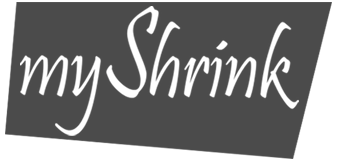Like thousands of others and several times a day I dial a password code to access my voicemail. But if you interrupted me and asked me to write it down I'm stumped!
My fingers "know" the number because I dial it without thinking.
How to Change Your Personality Using Self Regulation
You see, my password code is stored in the procedural memory system of my brain where it isn't easily accessible for explicit, verbal recall. And here's the rub . . . much of what we do in counseling depends on changing procedural memory.
- Do you find it hard to change a bad habit?
Entrenched procedural patterns are the culprit. - Want to change the way you respond to stress?
Change the procedural response to stress and find yourself feeling calmer.
Changing or replacing procedural memory is the key to successful counseling, and thus the key to changing your behaviors.
You see, your nervous system records many patterned behaviours. These patterns can be changed through self-regulation techniques.
Procedural memory is the basis for our character.
The procedural memory system stores the instructions for our habitual responses. In other words it patterns how we do things. More profoundly, it is about who we are.1
In other words, procedural memory is the basis of our character, those aspects of ourselves that make us unique.
When we learn a behaviour or an emotional response it becomes part of our procedural memory. Once it's been "programmed" into the procedural memory system we don't need to decide how to respond to a specific situation because it has now become automatic--after all, that's the whole point.
You see these "overlearned" patterns are the "behind the scenes" kind of memory that frees up our attention for more important tasks.
For instance, I can drive my car and carry on a conversation at the same time. The 'driving' behaviour is encoded in procedural memory.
Since I've overlearned the skills needed for driving I don't need to be conscious of every detail in order to keep my car on the road.
This kind of memory is called "procedural" because it pre-determines how we will react in a given situation. Once established in the nervous system, it is non-conconscious and automatic.
Remember learning how to ride a bike? The experiences of balancing, pedalling and steering were recorded in your brain, but you won't need to consciously access those memories once the right moves have been imprinted.
Similarly, we learned how to walk but we don't recall how we learned, and now we don't need to.
When procedural memory kicks in, it's like being "on autopilot".
Procedural memory is important in counseling because many of our emotions and behaviours that accompany them occur 'automatically'.
In order to change a behaviour we need to bring it into conscious awareness and 'out of procedure'.
In order to change a behaviour we need to bring it into conscious awareness and 'out of procedure'.
Procedures take a while to learn but they make life a lot easier. Can you imagine for instance if we had to sound out every letter of every word in order to read? Reading becomes a procedural skill.
Yes, you can change your personality!
An important feature of procedural memory is that it tends to persist; it's resistant to change. This is a good thing because you don't want to have to keep re-learning behaviours. But this also means that you can't change a procedure, unless and until you pay attention to how and when it operates. And procedural patterns take a while to unlearn.
Let's say you like to play tennis; you were self-taught and have played for years. You decide to take some lessons. The instructor shows you how to swing the racquet more effectively.
But you soon discover that you just can't just tell yourself to swing it differently. The old pathways interfere with the new ones. It's hard to interrupt a well-established procedure.
In fact, those original neural pathways, though weakened, will always be there, for we currently have no reason to think that they will deteriorate. Under conditions resembling the initial circumstances in which they were laid down they may even be reactivated!
But the good news is that the new, regulated pathways will eventually override the old ones.
Interrupting the "Stress Response" Procedure
To change your reaction - your automatic reaction - to stress or any personality trait for that matter, is to interrupt the pattern in the exact moment you're having it. What's sometimes referred to as 'pattern interrupt' is the most effective change agent known.
And one of the reasons it's so effective is that the brain learns best when it's having a new experience.
And guess what? When you're pausing to use self-regulating techniques - you're having an "experience".
You can start today with a little technique called the 12 Second Chill.
Just know that when you interrupt any pattern - you begin the process of underwriting that pattern. You start the process of developing new patterns. You're essentially doing the same thing when you stop and take a Chill moment.
RELATED TOPIC
Stress Free Zone
Notes
1 Grigsby defined character as..."Those things that people do routinely, automatically, and nonconsciously, and which makes us knowable, predictable..."p.102.
Reference and further reading:
Grigsby, Jim & Stevens, David (2000). Neurodynamics of Personality. New York: Guilford Press.
Taking the Science of Counseling Tour?
Click on the Activation link below:
Introduction
What's with the Reptile?
The Right Brain
Activation
Implicit Memory
Procedural Memory
Joy

